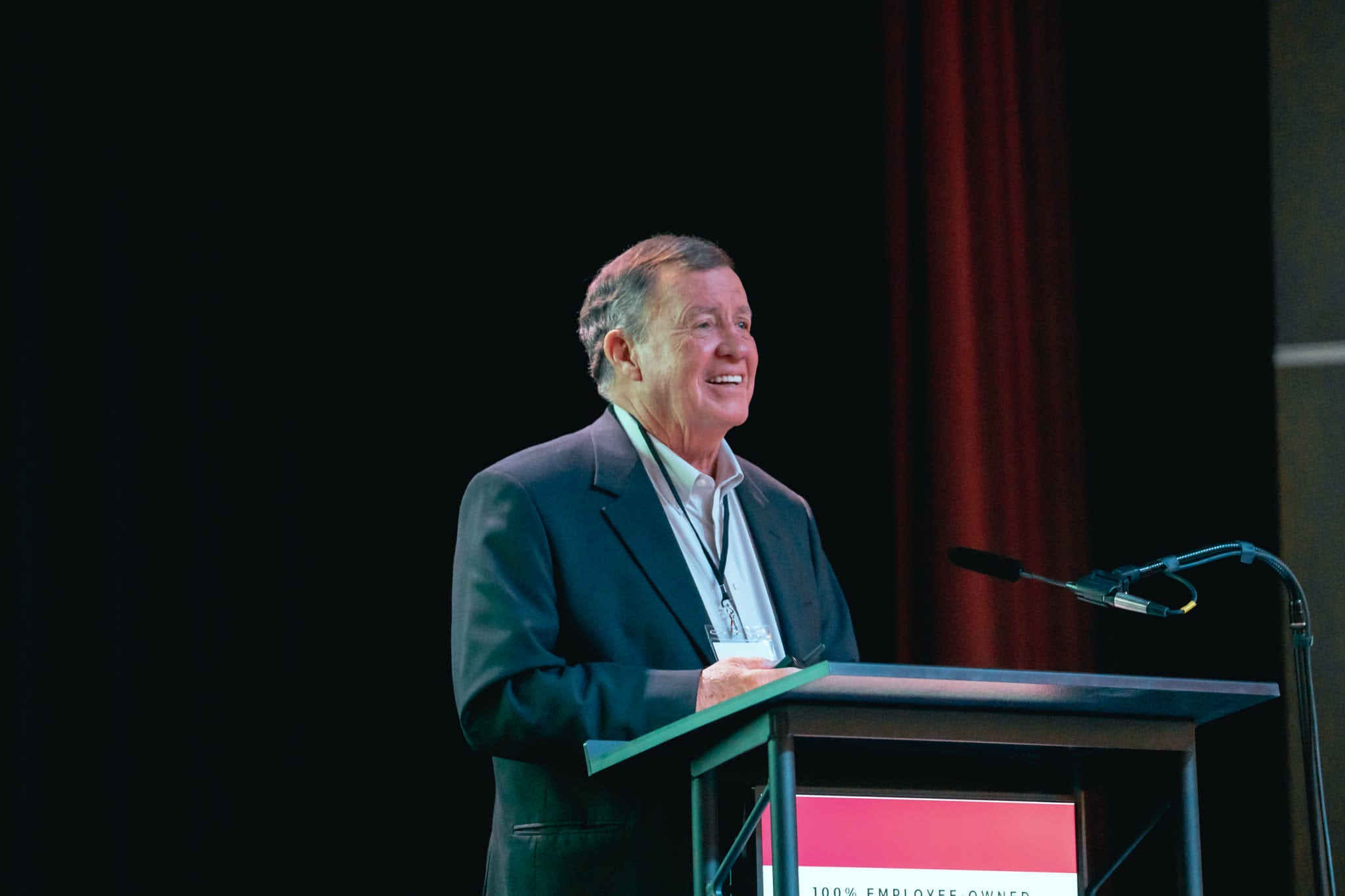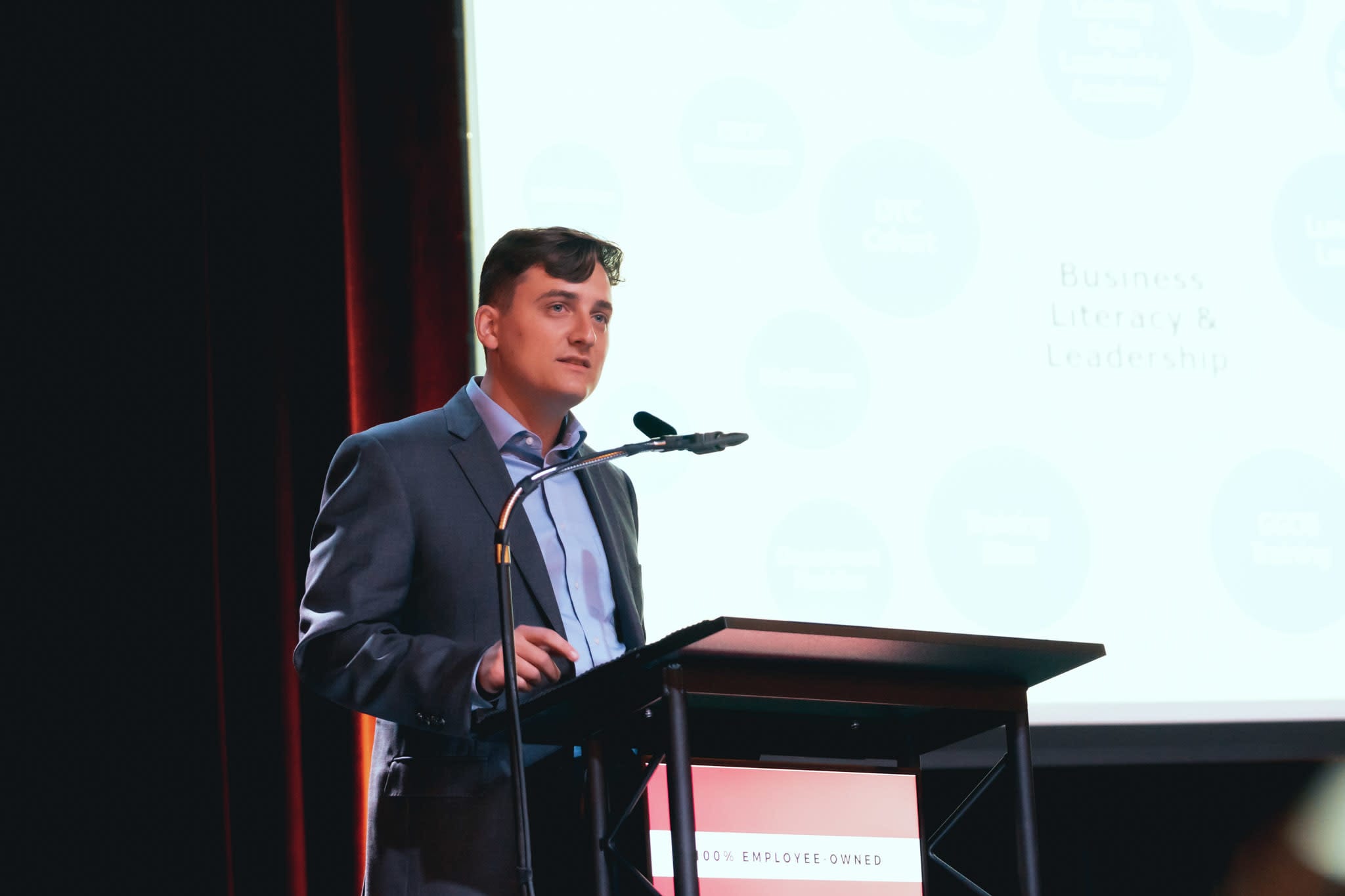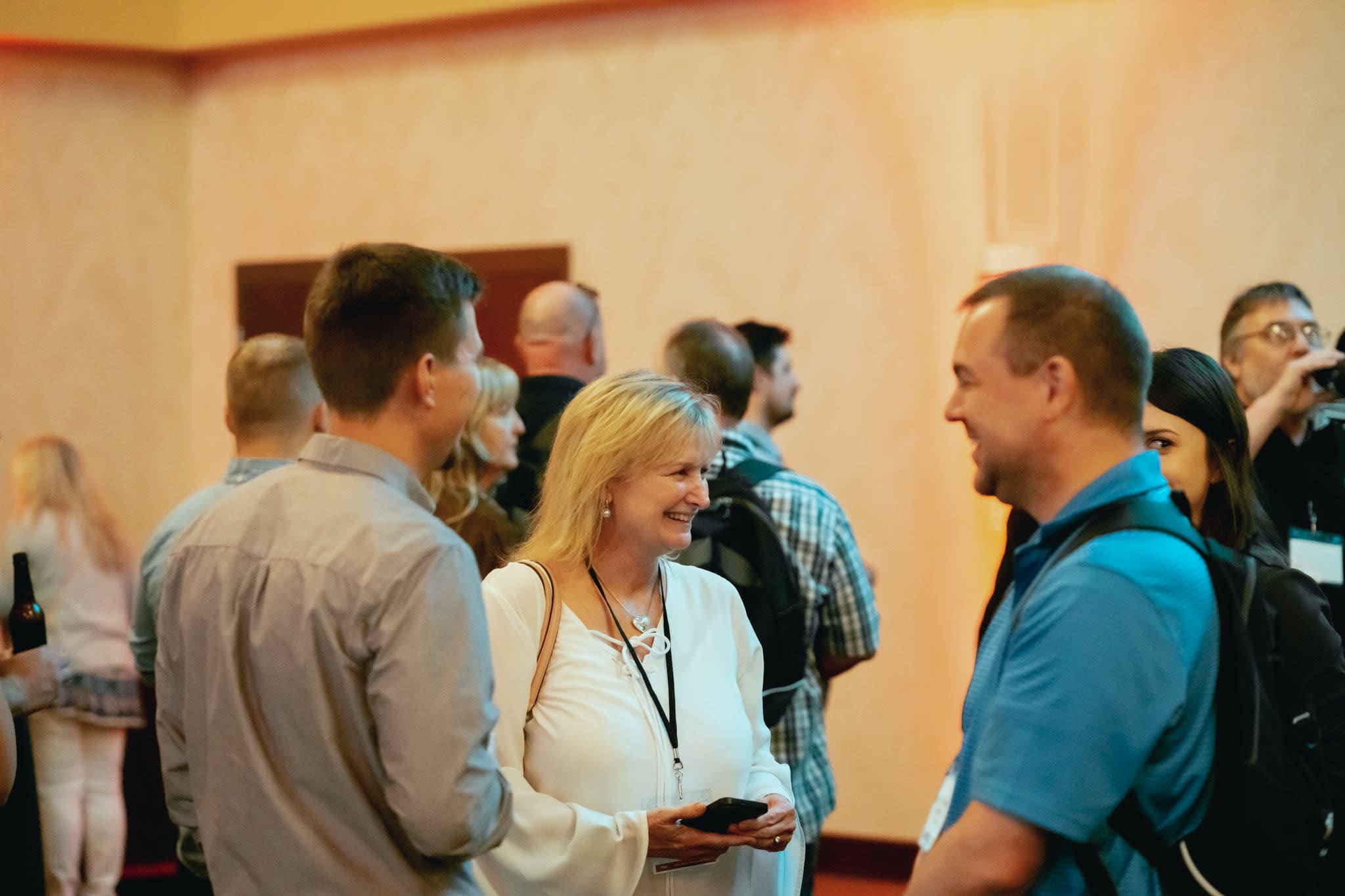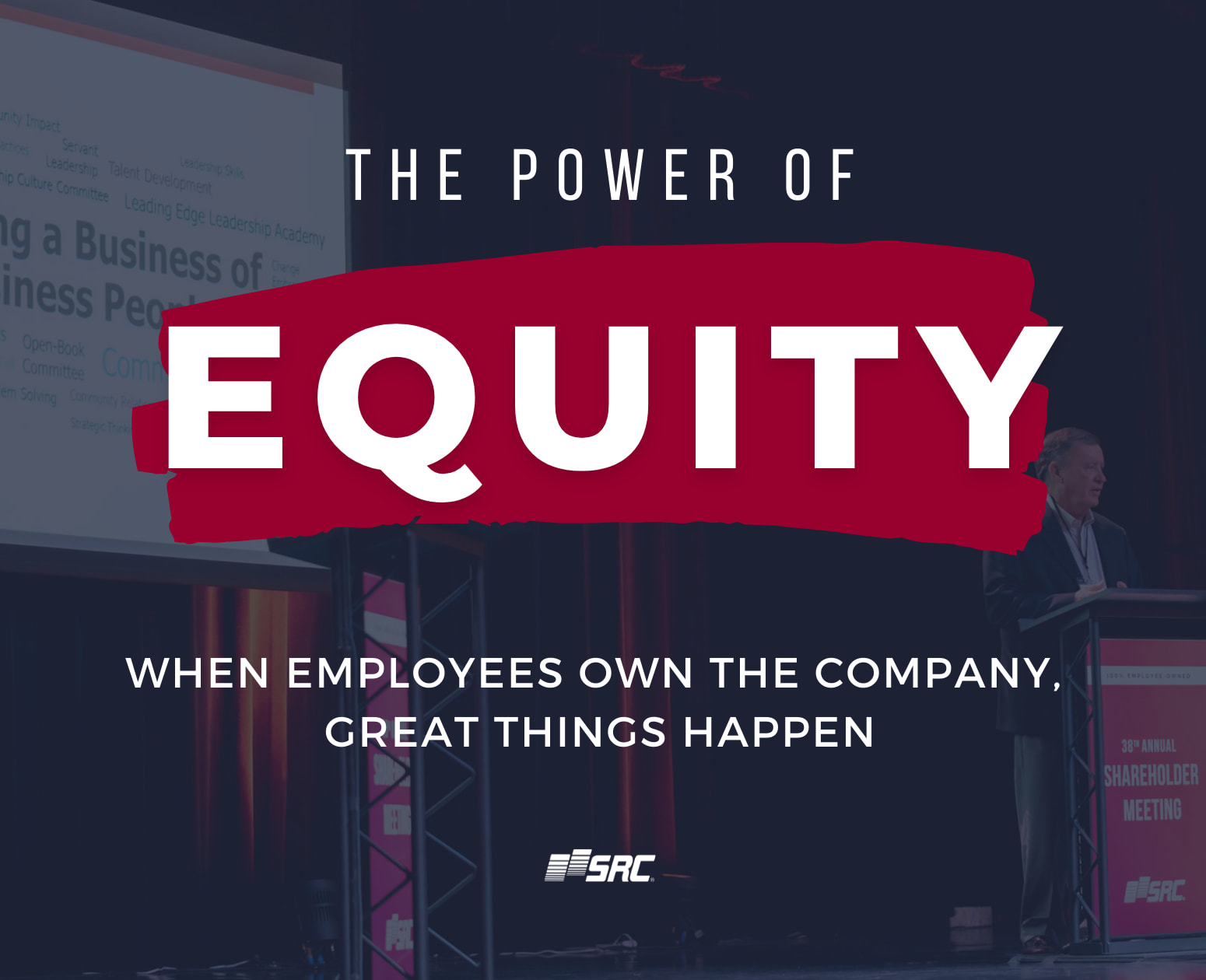The Power Of Equity: When Employees Own The Company, Great Things Happen
When the employee-owners of SRC Holdings gathered on the evening of Wednesday June 15, 2022, for SRC’s 38th Annual Shareholder Meeting, you could feel the electricity in the room. Many of the company’s 2,000-strong workforce were in attendance—some with spouses, partners, and children in tow. Not only was everyone enjoying the ability to gather in person again, the company and its ten subsidiaries had been on a hot streak after a down year caused by the disruptions of the pandemic. Everyone was expecting big news because they were about to learn the updated share price of their company.
They weren’t going to be disappointed.
Thinking And Acting Like Owners
Unlike in companies with more traditional ownership structures, where a few individuals or investors might own the business, SRC is 100% owned by an employee stock ownership plan, or ESOP. After three months of working for one of SRC’s subsidiary businesses, associates are enrolled in the ESOP as a benefit. The value of their ESOP shares grows along with the company over time, until they decide to leave or cash out at retirement.
But an ESOP or a stock certificate alone isn’t enough to get people to think and act like owners—especially for younger associates whose retirement isn’t remotely on their radar. Rather, it’s by actively participating in the business, by learning the financial drivers and developing growth strategies that embrace diversification and contingency planning, that the associates at SRC learn what it means to be an owner. It’s the employee-owners who create the vision of where the company is headed into the future, and then take action to reach that destination. They engage in growing the value of their business. These are all core practices of what’s known as The Great Game of Business, a communication and education system developed by SRC at its founding in 1983.
The more associates understand how they contribute every day through their work, the more they gain a sense of appreciation for what they’re building with their colleagues—and the more gratifying it is to see the numbers on those ESOP certificates grow over time. It’s a way to make equity tangible and more than just a piece of paper.
When you combine those Great Game practices with owning equity in the business through something like an ESOP, it’s amazing what great things can happen.
The Essence Of Ownership
Consider that when SRC held its first shareholders meeting in 1984, a year after SRC spun itself out of International Harvester, the total value of the business was $54,000. Since the business had taken on significant debt to buy the business, their debt-to-equity ratio was an abysmal 89-to-1. That meant that if they missed a single loan payment, they would lose everything. That also meant that if the 100 associates who joined the new company were going to make it, they all needed to play an active role in the business. Every. Single. Day.
Jack Stack, the former general manager of the Harvester plant, and now the new company’s CEO, faced a dilemma. How could he convince a group of hard-edged factory workers the intricacies of income statements and balance sheets? Or that debt was now their mortal enemy? The answer he seized on was by teaching them that business was like playing a game. He wasn’t trying to trivialize business, but to demystify it. To play, you needed to know the rules, you needed to keep score, and you needed to share a stake in the outcome, good or bad.
That’s what ownership is really all about.
When Stack and his colleagues first tried to convince its associates that learning to run a business was not any more complicated than learning the rules to a game, there were skeptics and doubters. Some didn’t trust the numbers management was sharing with them. Others hated the accountability that comes from transparency. And when some of them got their first stock certificate, they wondered if they could trade that for a cup of coffee.
Those folks didn’t appreciate what it meant to be an owner—and they weeded themselves out of the company over time.
But those who stayed and bought into the idea of thinking and acting like owners have built something remarkable over the past 39 years. In this last year, for instance, one associate with a salary of about $50,000 saw their stock portfolio increases six-times that amount.
Giving People A Voice
When the 38th Annual Shareholder’s Meeting kicked off at 5:00 on a Wednesday evening, the first message was about giving back.
The first presenters welcomed their colleagues and then shared how the company’s Community Relations Committee, made of SRC volunteers who volunteer their time, along with SRC Holdings donate from $2 million to $3 million a year to various causes in the Springfield, Missouri, community over the prior 18 years. That doesn’t count other money the company had donated directly to various non-profits in the community—or the individual contributions of time and money SRC’s associates had given to worthy causes. That includes many who serve on boards of those non-profit organizations.
In other words, even as the company experienced the tremendous growth over the years, SRC always made giving back to the community a top priority.
But the other key message from members of the Ownership Culture Committee was that those decisions about where the money went weren’t made on a top-down basis. Every employee-owner inside the business has a voice—from sharing opinions about how to give back to the community, to where the company should head into the future. Associates get opportunities to be heard by participating in committees inside the business, such as the Community Relations Committee or the Ownership Culture Committee. The members of SRC’s Wellness Committee and Health & Safety Task Force played an incredibly influential role in steering the company and its associates safely through the worst of the pandemic.
SRC’s associates can also be heard in their weekly huddles, where they discuss the company’s financial results and future forecasts. The huddles also serve as the hub of the communication and education engine inside the business.
In short, it’s not enough to sit on the sidelines inside an employee-owned company and hope something good happens. Far from it. Ownership is a participative sport. And when a team comes together on a long-term plan like SRC has, that’s when the magic really happens.
Generating Long-term Wealth Together
It was Jack Stack, the keynote presenter at the Shareholder’s Meeting, who finally delivered the big news everyone was waiting for.
“You can build an outrageously successful company when you appeal to a higher level of thinking,” he told the audience.
Stack then painted a picture of where the company had come from—and where it was headed. He shared the company’s collective five-year sales forecasts that every associate inside the business had a voice in shaping. He also talked about how the company has continued to diversify by, for instance, investing in real estate projects—covering some 200 acres and three million square feet of floor space—that are owned by the associates.
It is those financial results, investments, and property holdings that shape the value of each associate’s shares in the ESOP.
Every year, companies with an ESOP must get an updated valuation of their business by an outside party. It is that valuation that determines the share price that drives the value of each associate’s ESOP certificate. What’s remarkable is that SRC has doubled the value of the business within five years of each recession it has weathered.
When Stack revealed the magic number for 2021—the value of the business leaped up 17.5% from the year before and miles (and millions of dollars) apart from the $54,000 value from 1984—a few gasps were followed by hooting and hollering among the employee-owners gathered in the audience.
It was a big number.
For context, the new valuation meant that if you invested $1,000 in SRC back in 1983, that stake would be worth $9 million today.
“You did this,” Stack told the audience. “You persevered through four recessions and a pandemic. You made it happen.”
Spreading The Wealth
SRC’s healthy valuation number doesn’t even tell the full story of the kind of wealth the employee-owners of SRC have generated over the years. While the company has grown to 2,000 associates (1,234 who are currently stockholders)—many of those employee-owners have been with the company for less than five years. Only a handful of associates from SRC’s early years remain on the payroll as most of them have retired—cashing out their shares in the ESOP.
Stack told the audience that SRC has paid out some $125 million over the past 38 years to cash out those owners who retired or left the company. More than a few of those who retired left the company as millionaires.
Not too shabby for a company that started out as a garage shop that remanufactured heavy-duty diesel engines.
“Pairing equity with the Great Game is how you build wealth that goes beyond the instant gratification of wages and bonuses,” Stack told the audience. “This is the real difference between the haves and the have-nots.”
Gallery
























